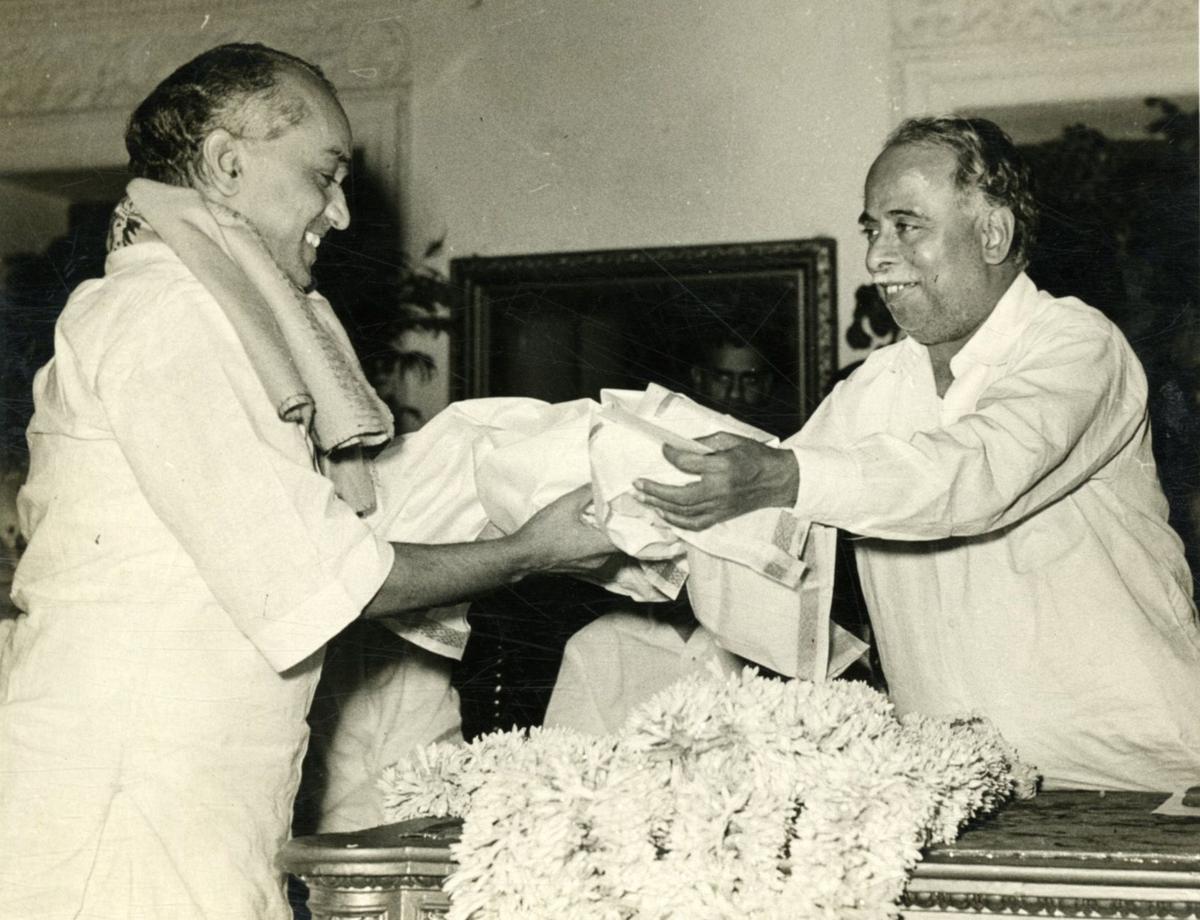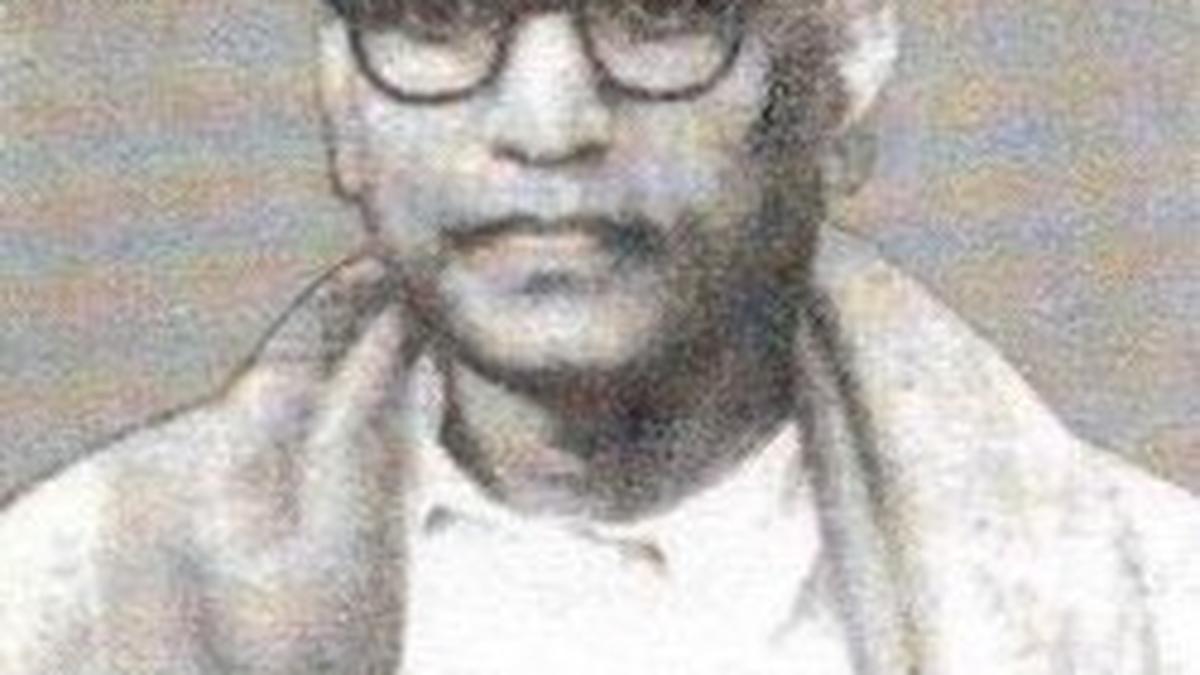
S. D. Sundaram, who made a splash with his very first play, Kaviyin Kanavu
| Photo Credit: Special Arrangement
Tamil theatre’s history is delightful with many stalwarts having created works that have stood the test of time and inspired generations of actors and directors. Today when established and amateur troupes are experimenting with new subjects on stage, it would be a good idea to recall how some yesteryear theatre personalities thought ahead of time. One such was S.D. Sundaram (1921-1979).
One of Tamil stage’s prominent playwrights in the mid-20th century, Sundaram was born in Athur near Salem. He entered theatre at an early age, joining Nawab Rajamanickam Pillai’s drama troupe Madurai Devi Bala Vinodha Sangeetha Sabha around 1933. Seeing his interest and proficiency in Tamil literature’s great works such as Athichuvadi, Kondrai Vendhan and the Tiruvarutpa, Rajamanickam Pillai encouraged him to pursue his Vidwan course, which Sundaram passed with flying colours.
Nawab Rajamanickam (L) with the then Chief Justice P.V. Rajamannar during the staging of the play Dasavatharam.
| Photo Credit:
The Hindu Archives
In 1942, Sundaram was imprisoned in Tanjore for nine months for his participation in the freedom movement. Once out of jail, he rejoined Nawab Rajamanickam Pillai’s troupe, only to branch out on his own a little while later. In 1944, with the blessings of his guru, Sundaram and another youngster from the troupe, T.K. Thangavelu (better known in the world of theatre and cinema as T.K. Krishnaswamy), left Madurai Devi Bala Vinodha Sangeetha Sabha to launch Sakthi Nataka Sabha. Their first production was Kaviyin Kanavu, written by Sundaram himself.
A star studded-cast which included the likes of M.N. Nambiar (who also traced his dramatic lineage to Nawab Rajamanickam Pillai’s drama troupe) as the Rajaguru and S.V. Subbaiah as the poet enhanced the play’s appeal with their performances. The play was premiered in 1944, a review that appeared in 1945 shows that it was ahead of its time in terms of adopting new techniques and technology in the presentation of the play. For starters, it had just one song, unheard of in an era when songs were still an integral part of stage plays. Secondly, it made use of electric lights to good effect. Another aspect was the design of the stage itself. Two pillars were set in the middle of the stage and were moved to either the left or the right, depending on the requirement of a particular scene. It also used slide projections to introduce the cast and crew of the play. The Rajaguru was introduced using the shadow technique.

S.D. Sundaram being honoured by former Tamil Nadu Chief Minister C.N. Annadurai on February 12, 1968.
| Photo Credit:
The Hindu Archives
The play was infused with strong political views of the poet, seeking to free his motherland from the clutches of the villain (from a foreign power). A play called ‘Kanavu’ set within this play instilled a sense of patriotism in the poet’s countrymen. It spoke of his dream of a poverty-free, equal society. Coming as it did on the throes of our country’s independence, the play was a stupendous success.
Noted playwright-poet Bharatidasan who presided over a performance at Dindigul spoke in glowing terms about the actors’ performances. The play proved a turning point in the Nambiar’s and Subbaiah’s careers. Somasundaram of Jupiter Pictures, who was impressed by their performances hired them on contract for his production house. When Nambiar could not continue performing the play on account of his increasing movie commitments, the mantle fell on a youngster who would go on to become one of Tamil cinema’s prominent lyricists, albeit briefly, Pattukottai Kalyanasundaram.
Sundaram went on to author plays such as En Kadhai, Aravindar and Nam Thai. He was also a dialogue writer for several successful films such as Ondre Kulam, Mohini MGR was paired with V.N. Janaki for the first time) and Kappalottiya Tamizhan. In 1973, he wrote a play titled Veera Sudhandhiram, to mark the silver jubilee of Indian Independence. It was inaugurated at the centenary celebrations of theatre legend Pammal Sambanda Mudaliar that year, starring several film stars such as R. Muthuraman, T.K. Bhagavathi, T.R. Ramachandran, V.S. Raghavan and others.
Sundaram also served as a member of the Upper House of the TN Legislature between 1964 and 1968 and as the secretary of the Iyal Isai Nataka Manram from 1968 to 1976. He passed away in 1979.
Published – May 28, 2025 01:58 pm IST



